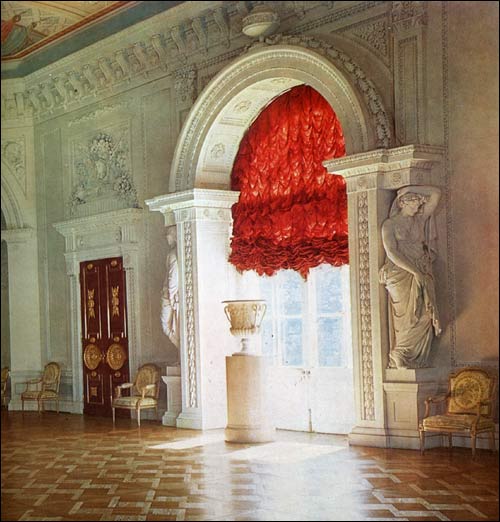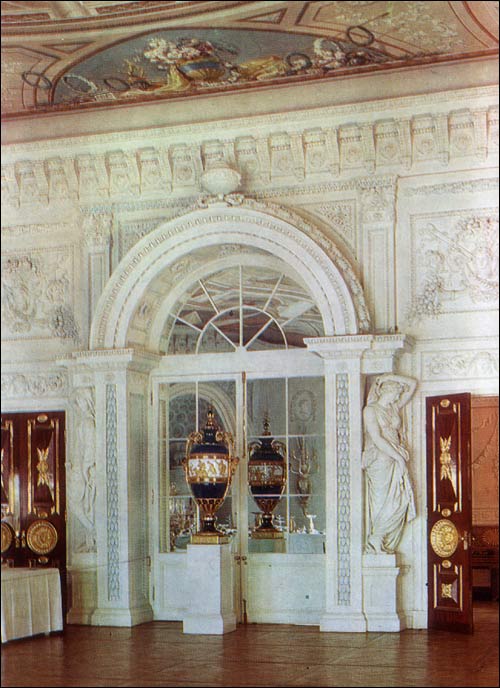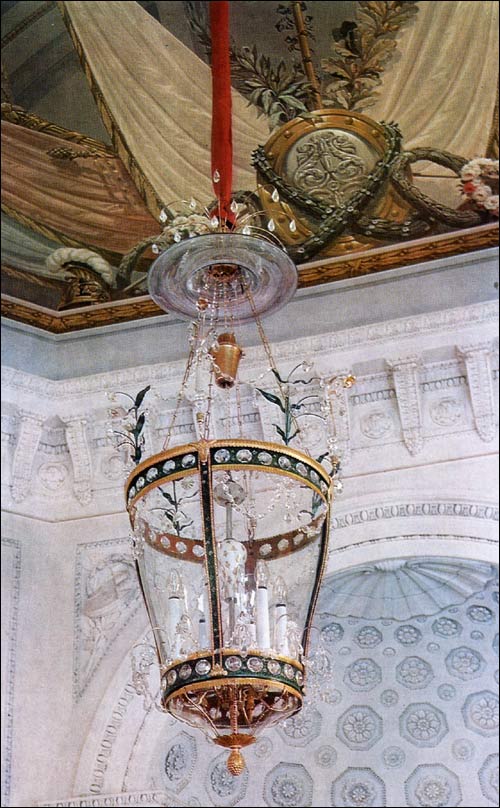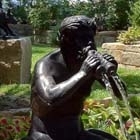Visit my wonderful garden in the Palazzo Dei Cani Neri in Austin and see the beautiful bronze statues and fountains there!

|


The Grand Hall bears the alternative name of Throne Room, as it had once contained a Chair of State. Here Paul I presided over the ceremonies of the Knights of Malta, whose Grand Master he was since 1797. The decoration of the interior had not yet been completed - the gilding of the mouldings and the painting of the ceiling panel still remained to be done when the Chair of State was already installed, under a canopy of embroidered velvet with the imperial arms and the emblems of the Knights of Malta, against the background of a window hung with a drapery of the same fabric.
The Grand Hall was designed by Brenna as an autonomous architectural unit, an isolated block, with great French windows set under arches in all the four walls (the window giving into the adjoining apartment has mirrors instead of glass). The archivolts were supported by caryatids executed from Brenna's sketches by Ivan Martos and Mikhail Kozlovsky, Russian sculptors of note. Destroyed during the war, the figures have been reproduced by Nadezhda Maltseva and Tamara Shabalkina with Professor Igor Krestovsky as artistic advisor. This hall, the largest in the palace, designed on a square plan, with truncated corners containing niches, each with a stove embellished with mouldings, produces an effect of magnificence and grandeur. The wealth of ornamental stuccowork, the white and gold wall lights of carved wood, the polished mahogany doors with gilded decorations, all add force to this impression. The decor of the Grand Hall provided a dignified setting for court ceremonies. The height of the hall was felt to be out of proportion to its length and breadth (the entire area being 400 square metres), yet Brenna was against increasing it in this particular section of the palace for fear of spoiling the proportions of the whole complex. He chose to increase the apparent height of the room by creating, with the help of the trompe-d-oeil technique, an effect of upward perspective movement. Pietro Gonzaga submitted three versions of a design for a painted ceiling presenting the upper tiers of a splendid classical hall seen in perspective from below, with a colonnaded gallery, balconies, draperies and banners, and endin in a dome with a round aperture through which was seen a blue sky, with white clouds floating in it. But the grandiose project was not destined to be carried out: the death of Paul I cut short the work on the Grand Hall before the painting of the ceiling or the gilding of the mouldings were even begun. When the work on the restoration of the palace was resumed in 1957, a team of painters under the direction of Anatoly Treskin did the ceiling fresco from the most decorative of Gonzaga's designs, thus completing the architectural decor of the Grand Hall. Of the art objects decorating the hall, the most important are the great vases of Sevres porcelain, produced in the 1780s. With their exquisite shape, the beautiful colour scheme combining the deep cobalt : .blue ground and the white band with relief figures in ormolu, the delicate chasing and fine gilding of the bronze, these vases rank with the noblest masterpieces of French decorative art.    |

|





